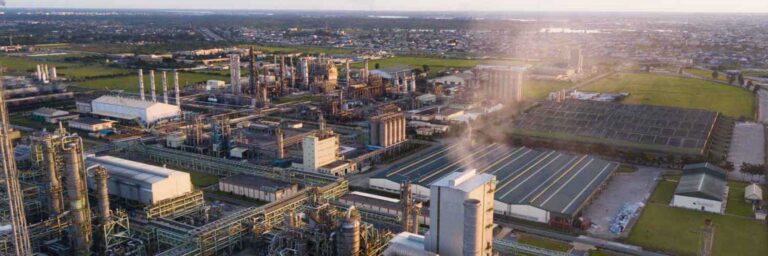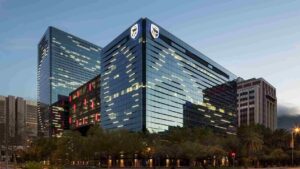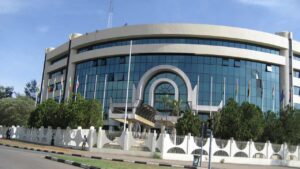10 Most industrialized African countries (2024)

Africa, as a continent, has been viewed by many as underdeveloped, but this is not entirely true. The continent has some of the most industrialized countries in the world. These countries have invested heavily in infrastructure, education, and technology, leading to rapid economic growth and development.
In this article, we will take an extensive look at the top 10 most industrialized countries in Africa and what makes them stand out.
Africa’s most industrialized countries
1. South Africa
South Africa is the most industrialized country in Africa and has the most diversified economy on the continent. Its economy is dominated by the services sector, which accounts for approximately 70% of the country’s GDP. The country’s manufacturing industry is also significant, with the automotive industry being a major contributor. South Africa is a major producer of vehicles, automotive components, chemicals, and machinery.
The country’s transportation infrastructure is well-developed, including a modern road network, railways, and ports. The country’s ports are also among the busiest on the continent, with Durban being the busiest port in Africa. South Africa’s economy has faced some challenges in recent years, including slow economic growth and high unemployment rates.
However, the country’s government has implemented various initiatives to address these challenges, such as the National Development Plan, which aims to reduce poverty and inequality and promote economic growth.
2. Morocco
Morocco is one of the most industrialized countries in Africa and has a diversified economy that includes agriculture, mining, and manufacturing.
The country’s manufacturing industry is focused on textiles, food processing, and construction materials. Morocco is also a significant exporter of phosphates, which are used in fertilizer production. Morocco has a well-developed transportation infrastructure, including an extensive road network, railways, and ports. The country has made significant investments in renewable energy, to become a regional leader in this sector.
Morocco has also implemented various initiatives to promote economic growth and reduce poverty, including the National Initiative for Human Development, which aims to improve access to education, healthcare, and other basic services.
3. Egypt
Egypt is the third most industrialized country in Africa and has a diversified economy that includes agriculture, manufacturing, and services.
The country’s manufacturing industry is significant, with textiles, food processing, chemicals, and pharmaceuticals being the major sectors. Egypt is also a major exporter of crude oil and natural gas. Egypt has a well-developed transportation infrastructure, including an extensive road network, railways, and ports. The country has also made significant investments in renewable energy, to meet 20% of its energy needs from renewable sources by 2022.
Egypt has implemented various initiatives to promote economic growth and reduce poverty, including the Vision 2030 plan, which aims to transform the country into a knowledge-based economy and improve the standard of living for its citizens. The government has also implemented various social welfare programs, such as the Takaful and Karama program, which provides cash transfers to poor families.
4. Tunisia
Tunisia has a diversified economy that includes agriculture, manufacturing, and services. The country’s manufacturing industry is focused on textiles, clothing, and food processing. Tunisia has made significant investments in renewable energy, to meet 30% of its energy needs from renewable sources by 2030.
The country has also implemented various initiatives to promote economic growth and reduce poverty, including the National Strategy for Sustainable Development, which aims to promote sustainable development and improve the standard of living for Tunisians.
5. Mauritius
Mauritius is a small island nation that has transformed its economy from one based on agriculture to one focused on manufacturing and services.
The country’s manufacturing industry is focused on textiles, clothing, and food processing. Mauritius is also a significant exporter of sugar and tourism services. Mauritius has a well-developed transportation infrastructure, including a modern road network, an international airport, and ports. The country has made significant investments in renewable energy, to meet 35% of its energy needs from renewable sources by 2025.
Mauritius has implemented various initiatives to promote economic growth and reduce poverty, including the Mauritius Africa Fund, which aims to promote trade and investment between Mauritius and other African countries.
6. Eswatini
Eswatini, formerly known as Swaziland, has a small economy that is largely based on agriculture, with the sugar industry being a major contributor.
The country’s manufacturing industry is focused on textiles and clothing. Eswatini has made significant investments in renewable energy, to meet 50% of its energy needs from renewable sources by 2030.
Eswatini has implemented various initiatives to promote economic growth and reduce poverty, including the National Development Strategy, which aims to promote economic growth and create employment opportunities.
The government has also implemented various social welfare programs, such as the Orphan and Vulnerable Children Program, which provides support to children who have lost their parents to HIV/AIDS.
7. Senegal
Senegal has a diversified economy that includes agriculture, fishing, mining, manufacturing, and services.
The country’s manufacturing industry is focused on food processing, chemicals, and construction materials. Senegal has made significant investments in renewable energy, to meet 30% of its energy needs from renewable sources by 2025.
Senegal has implemented various initiatives to promote economic growth and reduce poverty, including the Emerging Senegal Plan, which aims to transform the country into an emerging economy by 2035.
The government has also implemented various social welfare programs, such as the Universal Health Coverage program, which aims to provide access to health care for all Senegalese citizens.
8. Nigeria
Nigeria is the largest economy in Africa and has a diversified economy that includes agriculture, mining, manufacturing, and services.
The country’s manufacturing industry is focused on food processing, cement production, and textiles. Nigeria is also a major exporter of crude oil. Nigeria has a well-developed transportation infrastructure, including an extensive road network and ports. The country has made significant investments in renewable energy, to meet 30% of its energy needs from renewable sources by 2030.
Nigeria has implemented various initiatives to promote economic growth and reduce poverty, including the Economic Recovery and Growth Plan, which aims to promote economic diversification and reduce dependence on oil.
9. Kenya
Kenya has a diversified economy that includes agriculture, manufacturing, and services. The country’s manufacturing industry is focused on food processing, cement production, and textiles. Kenya is also a major exporter of tea, coffee, and horticultural products. Kenya has a well-developed transportation infrastructure, including an extensive road network, railways, and ports.
The country has made significant investments in renewable energy, to meet 100% of its energy needs from renewable sources by 2030. Kenya has implemented various initiatives to promote economic growth and reduce poverty, including the Vision 2030 plan, which aims to transform the country into a newly industrialized middle-income country by 2030.
The government has also implemented various social welfare programs, such as the National Safety Net Program, which provides cash transfers and other social benefits to vulnerable Kenyans.
10. Namibia
Namibia has a small economy that is largely based on mining and fishing, with the diamond industry being a major contributor.
The country’s manufacturing industry is focused on food processing, beverages, and textiles. Namibia has made significant investments in renewable energy, to meet 70% of its energy needs from renewable sources by 2030.
Namibia has implemented various initiatives to promote economic growth and reduce poverty, including the National Development Plans, which aim to promote economic diversification and reduce poverty.
The government has also implemented various social welfare programs, such as the Old Age Pension program, which provides a monthly pension to elderly Namibians who are unable to work.
Conclusion
These most industrialized countries in Africa have demonstrated remarkable economic progress in recent years. Their investments in technology, infrastructure, and education have helped transform their economies and create a more prosperous future for their people.
As they continue to attract foreign investments and expand their industries, these countries are poised to become even more significant players in the global economy. With their commitment to sustainable development and innovation, they offer a positive example for other nations in Africa and around the world.
Don't miss a thing. Follow us on Telegram and Follow us on WhatsApp. If you love videos then also Subscribe to our YouTube Channel. We are on Twitter as MakeMoneyDotNG.





